The single most effective way to revolutionize your guitar tone is through the use of effects pedals. Sure, your choice of amplifier and guitar model will have an impact, but having access to powerful effects while on stage gives you an abundance of options to take your songs to the next level.
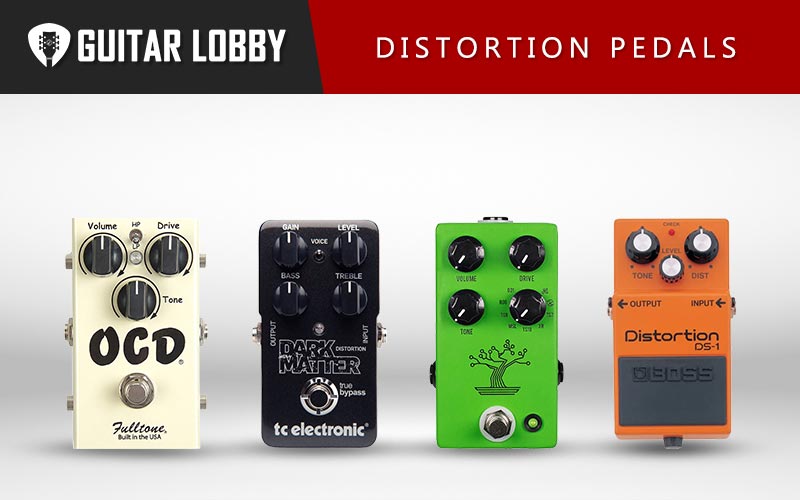
So why is a distortion pedal a worthy addition to your pedalboard? Distortion is perhaps the most commonly used effect on guitars, for the simple reason that it grabs attention. There’s a time and place for clean, understated guitar playing, but when you want to really engage with the crowd and emphasize a riff, nothing achieves this better than a distortion pedal. And when distortion pedals are combined with other commonly used effects such as wah, reverb, or delay, the results can be mind-blowing.
If you would like to add more character to your tone or melt some faces with a roaring solo, then keep reading through this detailed guide of the best distortion pedals available today. Distortion pedals come in a variety of packages with contrasting capabilities. This list covers all bases so you can identify the perfect choice to produce your desired tones. You’ll be cutting through the mix in no time. I’ll start by reviewing some of my favorite pedals in each price range, but if you want to learn more about distortion pedals before reading reviews, check out our buying guide at the bottom of the page.
| Name of Product | Image of Product | Description | Price Range | Full Review |
|---|---|---|---|---|
| 1. Empress Effects Heavy (Best High Gain Distortion) | 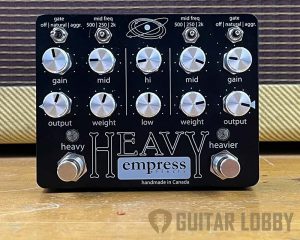 | Type: Analog Effects: Distortion | $329 | Read Full Review below |
| 2. Fender Pugilist Distorion (Best Classic Distortion) | 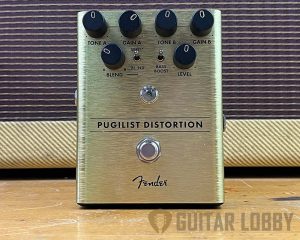 | Type: Digital Effects: Tube Distortion, Overdrive | $119 | Read Full Review below |
| 3. Wampler Sovereign | 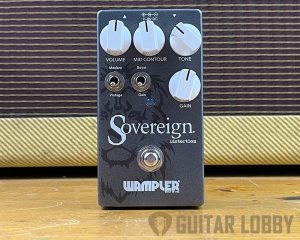 | Type: Analog Effects: Distortion | $200 | Read Full Review below |
| 4. JHS 3 Series Distortion (Best Value) | 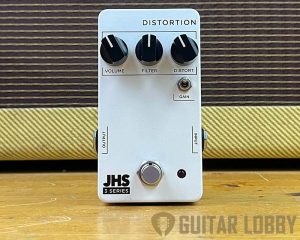 | Type: Analog Effects: Distortion | $100 | Read Full Review below |
| 5. ProCo RAT2 Distortion Pedal | 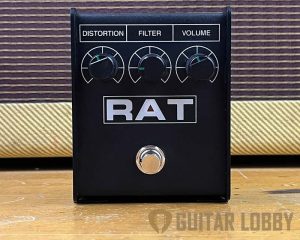 | Type: Analog Effects: Distortion, Filter | $90 | Read Full Review below |
| 6. EarthQuaker Acapulco Gold V2 | 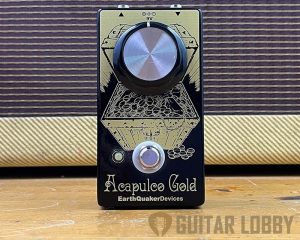 | Type: Analog Effects: Distortion | $140 | Read Full Review below |
| 7. JHS PackRat | 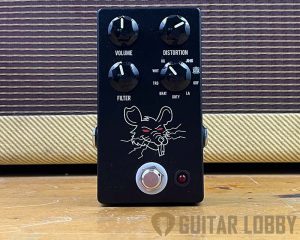 | Type: Analog Effects: Distortion | $250 | Read Full Review below |
| 8. MXR M78 | 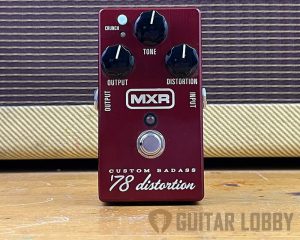 | Type: Analog Effects: Distortion | $120 | Read Full Review below |
| 9. Boss DS-1 | 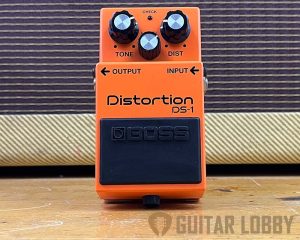 | Type: Digital Effects: Distortion | $65 | Read Full Review below |
| 10. TC-Electronic Dark Matter Distortion Pedal | 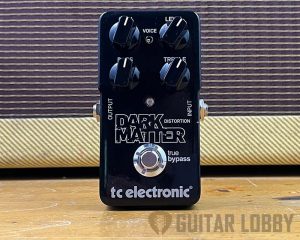 | Type: Analog Effects: Distortion, EQ | $70 | Read Full Review below |
Here Are the Best Distortion Pedals
1. JHS Bonsai 9-Way Screamer (Best Overall)
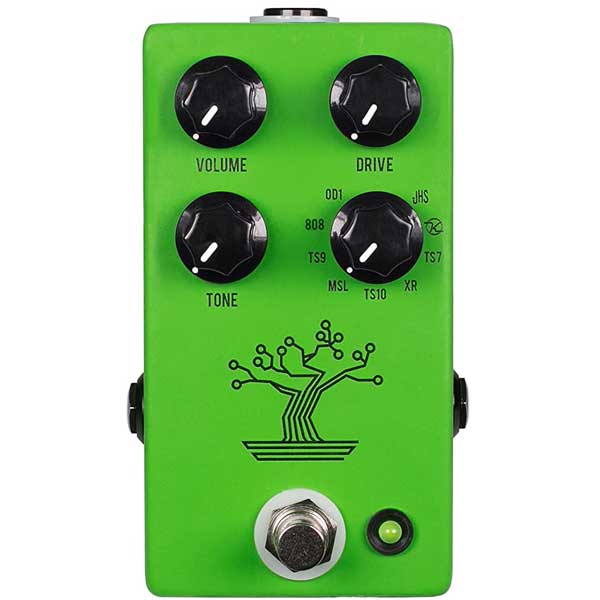
| Estimated Price | $230 |
| Type | Digital |
| Effects | Distortion, Overdrive |
| Connectivity | 1 x 6.35mm Jack Input, 1 x Outputs |
| Power | 9 Volt |
My Review: The Bonsai pedal by JHS pays homage to 9 of the finest distortion and overdrive pedals to ever be produced. With 9 individual modes that are all based on a separate iconic pedal, the Tube Screamer is filled with sound-sculpting options and that’s why I’ve placed it at the top of this list.
With a simple rotary knob, you can select one of the presets then tweak the output using the three other controls on the pedal’s face. The detail of each preset is outstanding, moving in chronological order from primitive Japanese distortion pedals like the legendary OD-1, to John Mayer’s favorite TS-10, and into the modern era with the JHS Strong Mod. Each of these settings has distinctive characteristics, and you essentially get nine pedals in one.
The remarkable thing about the Bonsai Tube Screamer is that despite its extensive range of distortion and overdrive sounds, it is relatively compact and will easily fit onto your board. The apple green aesthetics give it a unique look, and there is a green LED light next to the footswitch which indicates whether the pedal is on or is in bypass mode.
Who is this best suited for: Guitarists who want to have multiple distortion options will love the Bonsai. If you enjoy experimenting with pedals, you’ll have a blast familiarizing yourself with each of the nine presets. For authentic tub distortion which pays homage to vintage guitar tones, this pedal performs impeccably.
Bottom Line: Manufacturers are rarely able to cram so many effects into a small pedal, but somehow JHS has achieved this without making it overly complex or overcrowded. Despite the range of distortion effects it provides, the quality of each setting hasn’t suffered. It’s a detailed pedal that will keep you occupied for many hours.
2. Boss DS-1 (Best Value)
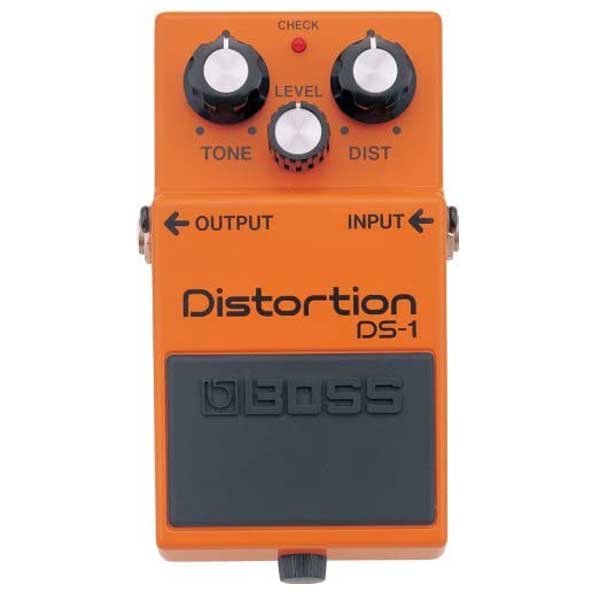
| Estimated Price | $65 |
| Type | Digital |
| Effects | Distortion |
| Connectivity | 1 x 6.35mm Jack Input, 1 x Output |
| Power | 9 Volts DC |
My Review: If you’re familiar with guitar pedals, the chances are you’ve come across Boss before. Their range of effects pedals boast great value for money and the DS-1 is no exception to this. With the classic minimalist Boss design, this distortion pedal provides you with all of the essential controls required to create everything from subtle warmth to aggressive tones. The housing is durable as you would expect with a Boss pedal, and the stompbox design makes it easy to bypass or activate the effect.
On the top left corner of the DS-1 is the tone knob. This is used to modify the overall sound of the distortion produced and can be adjusted with impressive accuracy. On the right side of the pedal, there’s a distortion control that impacts the amount of crunch present in the output. When this knob is cranked up, you get burning distortion that cuts through the mix nicely. The level control can be tweaked to ensure that there’s no dramatic difference between the dynamics of your clean guitar and the processed signal produced by the DS-1.
Who is this best suited for: The Boss DS-1 is perfect for musicians who want great sounding distortion without any unnecessary filler. It’s a roadworthy pedal that will have no problem handling the inevitable rigors of touring and practicing.
Bottom Line: At $65, it’s hard to find a distortion pedal that is a better value than the DS-1. Boss are specialists in producing guitar FX, so you can rest assured that the output from this pedal will satisfy your needs. Granted, it lacks the number of options featured on some of the other pedals on this list, but the quality and simplicity make it a great choice. Overall, I would say that this is the best distortion pedal for the money.
3. Ibanez TS9 Tube Screamer (Best Under $100)
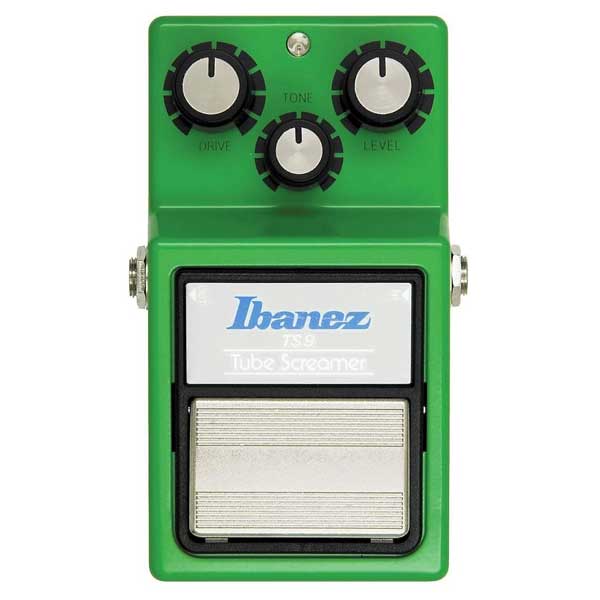
| Estimated Price | $80 |
| Type | Digital |
| Effects | Tube Distortion, Overdriv |
| Connectivity | 1 x 6.35mm Jack Input, 1 x Output |
| Power | 9 Volts DC |
My Review: The Ibanez Tube Screamer is hugely popular among guitarists due to its beautiful range of overdriven sounds that enhance the midrange. This frequency boost is especially useful for guitarists who play solos and lead lines, as it allows you to pop out of the mix with stunning clarity. The Tube screamer is usually used for one of two purposes: to produce smooth overdrive that fits perfectly into blues and rock or as a boosting pedal to push the output of your amp.
One standout quality of this Ibanez distortion pedal is its ability to boost your clean channel. Even when the volume is turned all the way down, the TS9 Tube Screamer produces a tiny amount of overdrive whilst retaining the natural clarity of your clean tone. If you find that the midrange boost is too harsh for your liking, you can simply turn down the tone knob to produce a smoother distorted tone. If you prefer more extreme forms of overdrive, the TS9 provides screaming tones when the controls are turned up to their limits.
Who is this best suited for: Players of blues guitar or metal will find the TS9 to be a great addition to their setup. It boasts great tonal versatility and can save you money that would have been spent on a volume booster pedal because it has that ability too.
Bottom Line: The TS9 Tube Screamer is an affordable distortion pedal that provides you with several functions. It’s not stacked with controls, but the few that it does have produce an impressive array of options that will add thickness and body to your sound. In my opinion, this is the best distortion pedal under 100 dollars currently on the market. It’s also a great distortion pedal for metal.
Popular Related Article: 17 of Our Favorite Fuzz Pedals (All Price Ranges)
4. TC Electronic MojoMojo (Best Under $50)
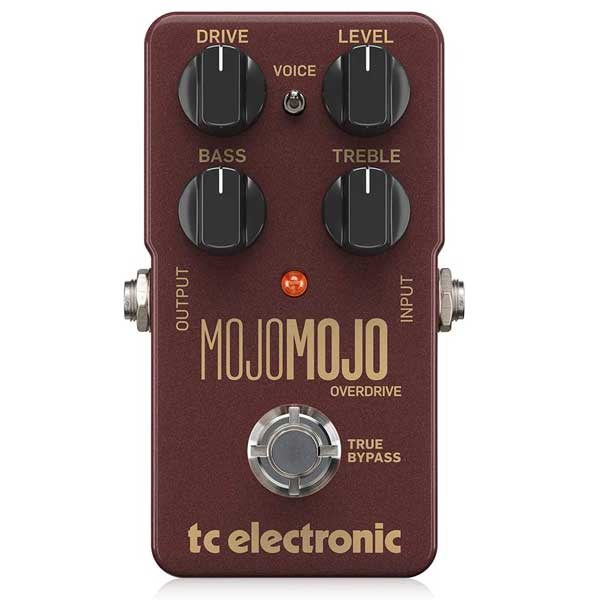
| Estimated Price | $35 |
| Type | Digital |
| Effects | Distortion, Overdrive |
| Connectivity | 1 x 6.35mm Jack Input, 1 x Output |
| Power | 9 Volts DC |
My Review: Legendary FX producers TC-Electronic have created a monster with the MojoMojo. Building on their highly popular distortion pedals from the past such as the novadrive, they’ve compacted all of their best qualities into a compact box with true bypass.
The MojoMojo sounds like a ramped-up tube amp, and this authenticity is in my opinion its greatest quality. It has an open character and subtle compression, allowing the slight nuances of your guitar playing to be apparent in the mix. Unlike many other distortion and overdrive pedals, the MojoMojo even adds color to chords without making them too muddy and chaotic.
When designing the MojoMojo Distortion pedal, TC Electronics used a special circuit that produces 3 – 4 more voltage than your average distortion pedal. This wasn’t done to boost the drive of the pedal, but rather to create a more dynamic range and headroom. The result is a pedal that is full of character, with easy to navigate controls in retro housing.
Who is this best suited for: If you play a mixture of rhythm and lead guitar parts, the MojoMojo is definitely worth considering. Due to the large amount of headroom it has, you can play multiple notes at once and still get the distinctive clarity that is usually lacking with distortion pedals. The true bypass switch makes it ideal for guitarists with a full pedalboard who want to preserve their clean tone.
Bottom Line: Durable, understated, and high quality, the MojoMojo is a brilliant little distortion and overdrive pedal. Whether you want slight warmth adding to your clean tone or you need roaring overdrive that sounds like an old worn-out tube amp, this TC Electronic pedal will have no problems providing you with both.
5. Boss MT-2 Metal Zone Distortion Pedal (Best for Metal)
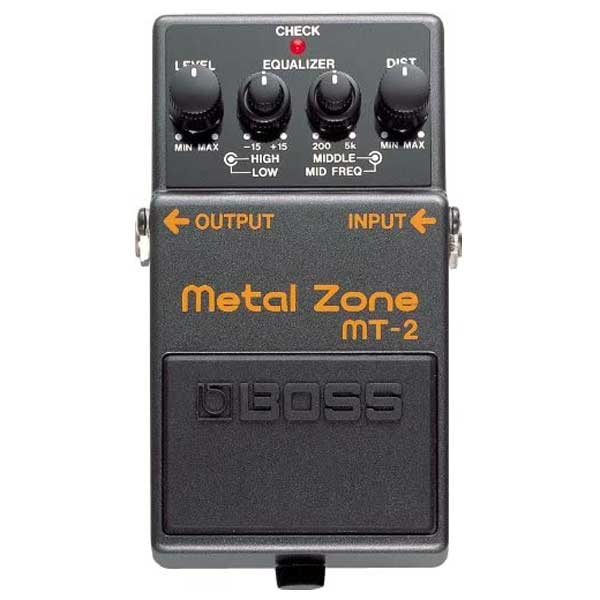
| Estimated Price | $115 |
| Type | Digital |
| Effects | Distortion, EQ |
| Connectivity | 1 x 6.35mm Jack Input, 1 x Output |
| Power | 9 Volts DC |
My Review: If you’re a metal guitarist, look no further than the MT-2 distortion pedal by Boss. This stompbox provides outrageous and over the top distortion tones, you can’t even imagine. It’s not for the fain-hearted! The Mt-2 is built around dual-gain circuitry which allows it to produce such thick sounding distortion. It has the capability to produce long-lasting sustain too, so you can shred your solos or let the notes ring out without losing any of the power. There’s also a 3-band EQ built-in so you can dial the tone in if it gets too harsh, or alternatively add in more of the bass, mids, or treble to make the effect even more extreme.
There’s a long list of iconic guitar players who have used the MT-2, including Prince and Dan Donegan, which should provide some verification of its quality. The overall output of the MT-2 is similar to a stack of overdriven amps in terms of thickness, drive, and power. There are very few distortion pedals specifically designed for metal music because it’s such a difficult tone to produce, but Boss has done an impressive job with this pedal.
Who is this best suited for: Straight up metalheads will fall in love with the MT-2. It’s not going to produce understated, warm distortion suitable for blues licks, but for tapping, shredding, and screaming this pedal is perfect.
Bottom Line: The MT-2 will certainly make your solos stand out. It can be piercing when cranked up, but once you’ve mastered the controls it’s capable of producing some insanely good metal guitar sounds and is highly durable too. If you’re looking for the best distortion pedal for metal this is going to be a top contender, especially considering its value.
Popular Related Article: Roundup of 27 Top Guitar Pedals (All Types)
6. Boss BD-2 Blues Driver
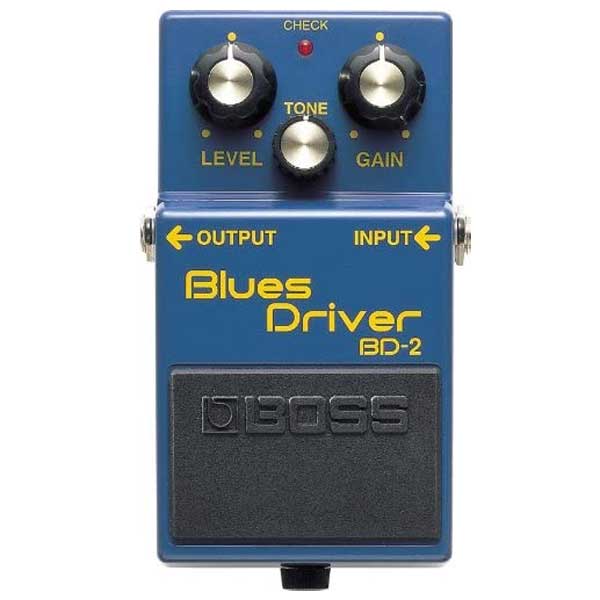
| Estimated Price | $120 |
| Type | Digital |
| Effects | Distortion, Overdrive |
| Connectivity | 1 x 6.35mm Jack Input, 1 x Output |
| Power | 9 Volts DC |
My Review: Boss makes another appearance on our list, this time with the BD-2 Blues Driver distortion pedal. Think of this pedal as a ramped-up version of the aforementioned DS-1, with more grit and power. This stompbox is perfect for pushing your amp to its limits and creating a saturated tone that lends itself to blues and heavy rock. Even when the gain is high, there’s very little muddiness produced by the BD-2.
Similar to the DS-1, the layout of the Blues Driver pedal is quintessentially Boss. The three controls at the top of the pedal are for adjusting level, tone, and gain. Although this may seem minimalistic compared to some of the more complex distortion pedals on the market, you’ll be surprised at how much tonal flexibility you have with this trio of knobs.
There’s no danger of the BD-2 Blues Driver being damaged by the wear-and-tear of being in a band. It’s built like a tank and comes with 5 year warranty to ensure its longevity. The distorted tones produced by this pedal sound like a genuine tube amp from years gone by, full of warmth and character. It’s small enough to squeeze onto your board next to a tuning pedal, and the stompbox design makes triggering the pedal a breeze.
Who is this best suited for: The BD-2 is the holy grail of distortion pedals for blues-rock guitarists. If you’re after the classic warm tones of Stevie Ray Vaughn or John Mayer, this Boss pedal will suffice. It’s simple, straightforward to use, and gives you an authentic tonal edge.
Bottom Line: This distortion pedal provides you with numerous tonal options. The no-nonsense design is backed up by the warm, vintage sound it produces. It’s the kind of pedal that makes you wonder how you coped when it wasn’t present on your pedalboard, and $120 I’d say it’s a steal.
7. Donner Morpher
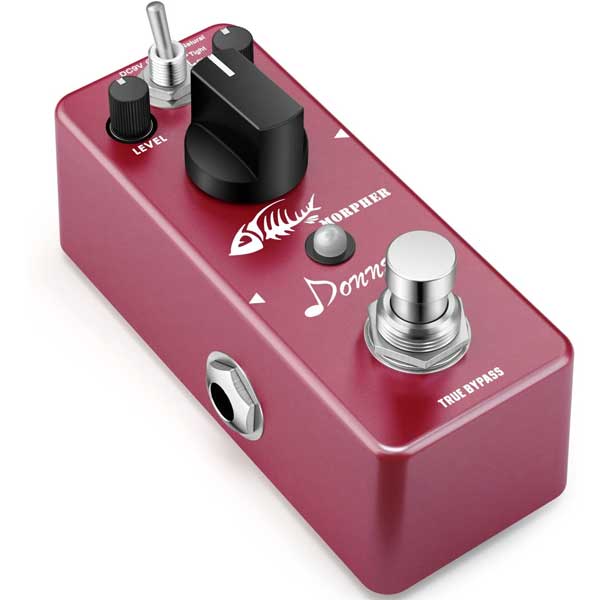
| Estimated Price | $30 |
| Type | Digital |
| Effects | Distortion |
| Connectivity | 1 x 6.35mm Jack Input, 2 x Output |
| Power | 9 Volts DC |
My Review: Next up on our list is the Morpher by fast growing Donner. This pedal is bursting with expression despite its minute size. Stylishly designed, the Morpher has three control knobs and a switch located at the top of the pedal. The level control can be used to create dynamic consistency between the processed signal and your clean sound, while the tone knob on the opposite side affects the thickness of the distortion produced.
The three-way selector switch at the top center of the pedal provides natural, tight, and classic distortion settings. The natural preset sounds warm and subtle, the tight preset gives your signal a thick undertone that has very little sustain, and finally, the classic setting is a more common distortion sound which is perfect for giving your solos a tonal boost. You then have a large gain control in the middle of the pedal, which when turned up transforms your sound into a burning inferno of distortion.
The main concern with cheap distortion pedals is that they lack durability. The Donner Morpher defies this preconception thanks to its whole aluminum-alloy housing. With a true bypass switch built-in, you don’t have to worry about it having a negative impact on your clean sound when the pedal isn’t active.
Who is this best suited for: If you’re looking for decent-sounding distortion on a budget, I’d recommend the Donner Morpher. It’s well suited to guitarists who already have a busy pedalboard due to its small size and large true bypass switch.
Bottom Line: It’s true that in most cases you get what you pay for when it comes to FX pedals, but the Donner Morpher produces a range of quality distortion options that belie its low price tag. It has strong expression and is capable of high gain distortion that will make your solos and riffs stand out and capture the attention of an audience.
Popular Related Articles: 17 Delay Pedals You Need to Check Out (Digital and Analog)
8. Caline CP-15
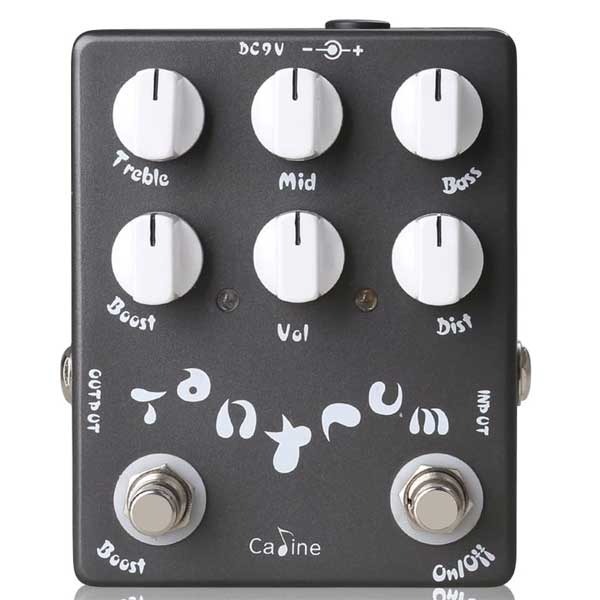
| Estimated Price | $30 |
| Type | Digital |
| Effects | Distortion, EQ |
| Connectivity | 1 x 6.35mm Jack Input, 1 x Output |
| Power | 9 Volts DC |
My Review: Another highly affordable option, the Caline CP-15 offers a generous number of controls that suit all styles of guitar playing. The best thing about this pedal is that it has a built-in three-way EQ which can be tweaked using the treble, mid, and bass control knobs. Having the power to fine-tune your frequency output is highly valuable, especially on a distortion pedal. Sometimes, we think that our sound is perfectly constructed in the practice room but when we get on stage the acoustics of the room can undo all of the hard work.
Thankfully, the smartly designed CP-15 allows you to accurately roll-off or boost the frequency range to suit your playing environment. Underneath the EQ controls, you have the standard boost, volume, and distortion level knobs. Interestingly, this Caline pedal has two footswitches in each bottom corner. The left one is for boosting your signal and can be used as a volume pedal when you want to stand out in

My name is Chris and I’ve had a passion for music and guitars for as long as I can remember. I started this website with some of my friends who are musicians, music teachers, gear heads, and music enthusiasts so we could provide high-quality guitar and music-related content.
I’ve been playing guitar since I was 13 years old and am an avid collector. Amps, pedals, guitars, bass, drums, microphones, studio, and recording gear, I love it all.
I was born and raised in Western Pennsylvania. My background is in Electrical Engineering, earning a Bachelor’s degree from Youngstown State University. With my engineering experience, I’ve developed as a designer of guitar amplifiers and effects. A true passion of mine, I’ve designed, built, and repaired a wide range of guitar amps and electronics. Here at the Guitar Lobby, our aim is to share our passion for Music and gear with the rest of the music community.
